Running like a runner in the middle of nature is a free activity that you can enjoy whenever you want. However, the running terrain on the course can be narrow and bring some surprises... Don't be discouraged! We have prepared a guide on the most frequent injuries that occur when running in nature and how to prevent them. We consult the opinion of medical and health professionals. Do you want to know what they say?
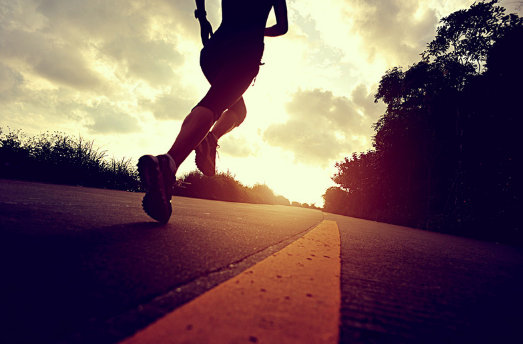
To run and enjoy, avoid injuries
If you're already committed to getting out and exercising, the last thing you need is to injure yourself. Injuries leave runners out of their activity for a while. If you are injured, you will require rest and abandon the sport until you recover. In addition, when you are well you will have to recover your state of form.
According to doctors, the most common injuries in a runner occur in the joints of the legs. Both an experienced runner and a beginner can be injured.
Why are injuries common when running cross country ? Because the terrain is uneven . Because of this, the ankle could be sprained, for example. An injury can happen at any time (there does not have to be a specific weather event or circumstance).
Some problems are due to wear and tear on the joint from long running. Let's look at some basic tips for going out into the field:
- • Don't increase the miles of your rides too quickly. Go longer distances progressively.
- • Give your body the necessary time to recover after each session. So you can enjoy running .
- • Avoid making your muscles tense or weak. Bodybuilding exercises and massages are the perfect complement to running in nature .
- • Run the right way. Sometimes injuries are also due to incorrect technique that can be corrected.
- • Wear the appropriate footwear for the field. Cross shoes are the most basic and fundamental equipment for runners in the natural environment .
Runner's knee in the field running
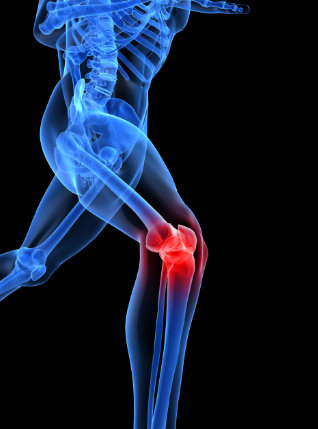
You will notice this discomfort as a pain in the front of the knee. You can feel this pain while running or when you have been sitting and resting for a while. It occurs because the tensor fascia lata muscle rubs against the knee tendon. It occurs frequently in runners who do many miles, such as long-distance runners or long- distance cross country runners . When you have runner's knee , the joint becomes inflamed . It is common for the runner to have to abandon his career due to discomfort. Normally, it is solved with adequate rest, although physiotherapy and anti-inflammatory therapy are advisable.
Iliotibial band syndrome or runner's syndrome
You feel a burning or sharp pain on the outside of your knee. Sometimes the pain can even extend to the hip. The discomfort is usually experienced when moving. In this case, the injury occurs because the iliotibial band is inflamed , which rubs against the knee bones. The pain usually appears while running. Some solutions for runner's syndrome include medication, stretching and strengthening exercises, or icing the knee.
Runner's shin discomfort
There is pain in the front or inner area of the shin. The discomfort worsens when a physical activity such as running in the field is practiced . High intensity sports such as cross country running can inflame the muscles, tendons and bones of the tibia. Why does this problem occur in those who go for a cross-country run ? Because certain surfaces of the field, like the lanes, are hard. The running terrain in nature is uneven. Another factor is inappropriate footwear. If you want to prevent shin splints, don't abruptly increase the intensity or duration of your workouts. Use the running shoes for the fieldsuitable. If you have acute discomfort in the shin, stop the activity and rest. You can apply cold to the pimple several times a day.
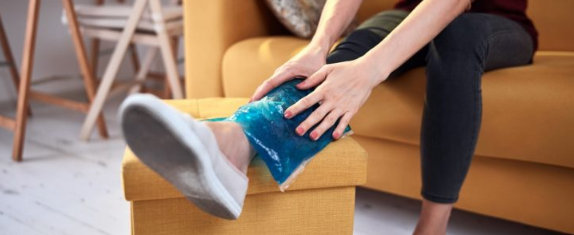
Plantar fasciitis in runners
This is pain at or near the bottom of the heel. It doesn't happen while you run, but after the activity or the next morning. The pain is intense and stabbing. The sole of the foot (the tissue that connects the heel to the toes) becomes inflamed. You don't quite know why it happens, but it's more common in runners and people who are overweight. Applying ice several times a day and pain relievers recommended by a doctor can help treat fasciitis.
Achilles tendonitis
Pain is felt in the lower leg, above the heel. It is also difficult to lift the toes. The condition happens because the Achilles tendon is overloaded. As with other injuries, it happens to runners who suddenly increase the intensity and duration of their runs. A doctor will indicate the care that must be applied at home (they are simple). Pay attention to this discomfort, as it could lead to a tear in the heel.
Stress fracture in runners
There is pain during the race and it gets worse with time. Usually, the discomfort appears on the shin or foot. Let's remember that the feet support all our weight. Continued hard running can cause stress fractures (small cracks in the bone of the foot and lower leg).
How to avoid getting injured in a cross country or running race in the field?
You can do a lot to prevent these running injuries in the field . Let's see the opinion of the doctors to practice running and enjoy it safely.
Before going for a run, assess your conditions or problems
Analyze whether certain conditions could affect your running activity in nature. Arthritis can arise in any joint. Certainly, intense running is not recommended when you have arthritis. Running does not directly cause arthritis (you can have it for any other reason). If you have the problem, running could aggravate the condition of your joints. Moderate yourself and better consult a doctor if you suffer from arthritis.
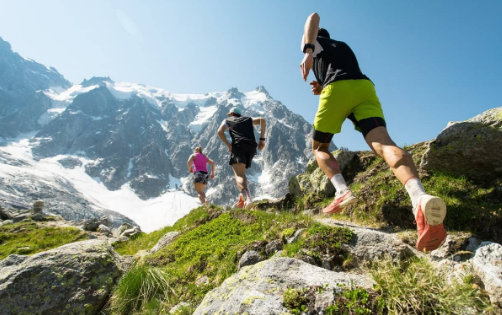
Do you spend enough time stretching?
Stretching lengthens the muscles and keeps them flexible. Stretching favors that the muscles do not have to make as much effort when you go for a run in the field . If your muscles are tense, it will be difficult for you to move properly and you could adopt a bad posture when running. So is it necessary to stretch before running in nature? The doctors keep saying yes. However, never start stretching cold. Do some exercises beforehand to warm up; for example, raising the knees, squats or some series of jumps. This will prepare you to stretch before you run . You could also stretch after the run.
Running shoes on the field are more important than you think
Today, all sports have their specific footwear. Therefore, you will ask yourself, do you need running shoes ? The truth is that yes, especially if you practice cross country or trail running cross country . Did you know that the wrong shoe can affect the normal movement of the foot and expose you to injury?
The running shoes on the field have been made to favor the natural movement of the foot. Waterproof shoes provide extra comfort in any situation. It is highly recommended that you invest in them if you run frequently and cross a long distance . Shoes should fit well and be snug enough (but not too tight). Don't wear worn-out shoes; better, change the old shoes for a new one.
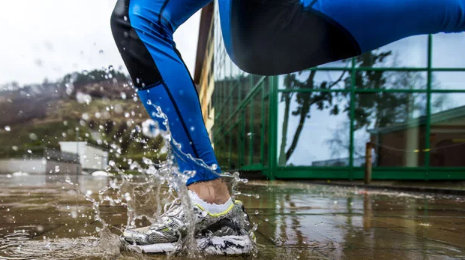
Complement the cross country or running race with other sports
Do you want to avoid injuries? Strengthen your body. Country running is a good cardiovascular activity, but you will also need to have strong muscles. Strength exercises with weights or your own body weight strengthen the muscles, which support the runner 's body as he runs. In other words, gaining a little muscle will help you run better, last longer and prevent injuries .
What complementary activities can attend the running? There are some; you can do weights, yoga, pilates ... They will keep you active. You could do these complementary activities on the days you don't go running. If you practice modalities such as cross country running periodically, you will run faster each time and you will do more miles in less time. In these cases, it is more important that you strengthen your muscles to prepare your body for the new speed.
How do you know if pain indicates a possible injury?
You always have to keep one thing in mind: running in the natural environment entails having soreness and some muscle discomfort in recovery. If you are starting to increase your race time or distance, you may experience more discomfort. Now, never ignore a sharp pain that persists. See a physical therapist or doctor if the pain doesn't go away on its own after a week or two. Sharp pain is predictive of injury. We do not want to injure ourselves and spend several months without enjoying running! Never risk serious injury.
How to recover muscles after running cross country?
Recovery is as important as the race. Doctors say the following: recovering makes your body ready for the next exercise session and, in addition, it is the best thing to prevent wear and tear injuries. Follow these guidelines after enjoying your run:
- • Let your muscles rest.
- • I eat healthy.
- • Keep your body hydrated.
- • Get plenty of sleep.
How to calm the muscles at home after running? Here is a list of actions that will come in handy:
- ✔ Apply ice and heat to the muscles.
- ✔ You can take over-the-counter muscle relievers.
- ✔ You can apply creams to relieve muscle pain.
- ✔ Massage therapies help.
- ✔ Use a massage roller or massage gun.
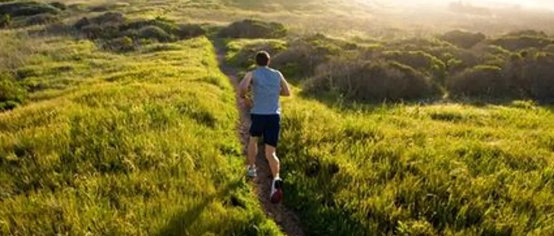
To enjoy running, you never have to increase distance and speed at the same time!
This is very basic advice. Go adding kilometers to your runs little by little. The same goes for speed. Don't increase your hitting rate from session to session! Doctors say not to increase distance and speed at the same time. Focus on one goal or another. Doing it all at once puts you at risk of injury.
Progress slowly following a marked path
Always look for a way to progress without harming your body. It is possible to achieve this, as long as the training is well planned. This is applicable to all physical activities. Any sport where you want to progress too quickly will cause injury. What can we do to enjoy trail running with peace of mind? We can increase the kilometers we cover each week by 10%. For example, if we have done 8 km, the following week we can run 8.8 km (no more than that). This is advice from health experts. Why is this progression important? Because this way we will get away from overloading our muscles and joints. Overloads can cause injury and inflammation.
For a runner , the most important thing is to be patient, especially if you are a beginner. You don't want to go too fast or set yourself very ambitious goals at the beginning. Try to enjoy running and nature. Being able to run through the field is a gift that we have to value. Activities such as running improve our health and quality of life when we plan them well and avoid injuries.




![CÓMO MONTAR UN GIMNASIO EN CASA CON POCO PRESUPUESTO [GUÍA 2024]](/modules//smartblog/images/296-home-small.jpg)




